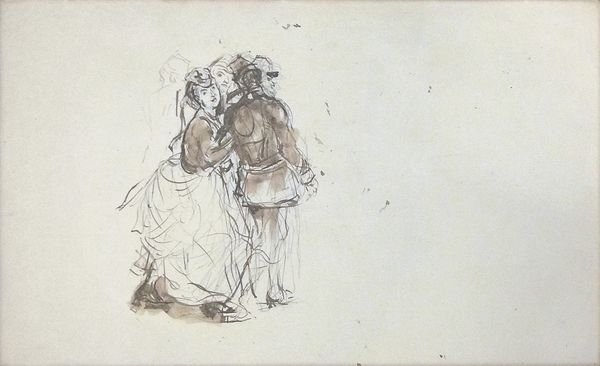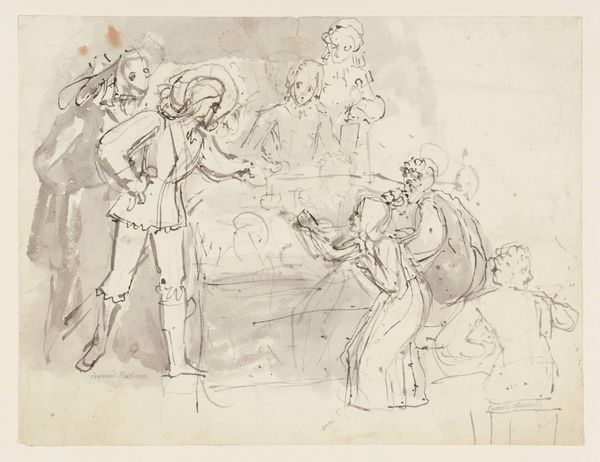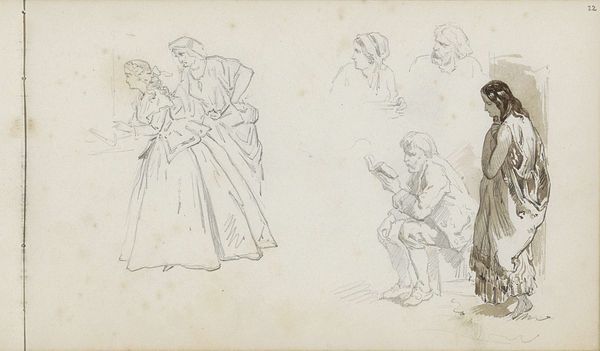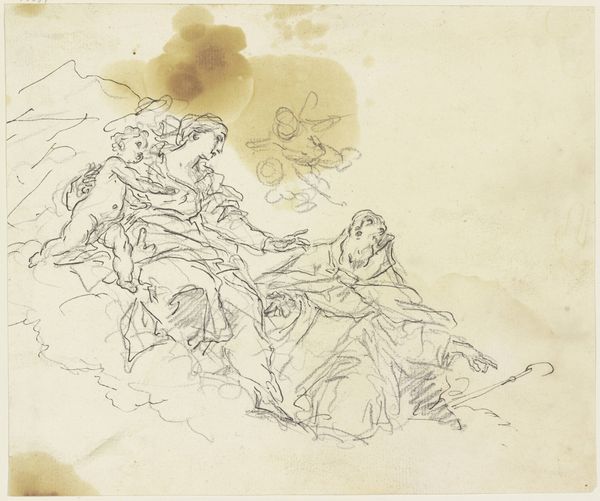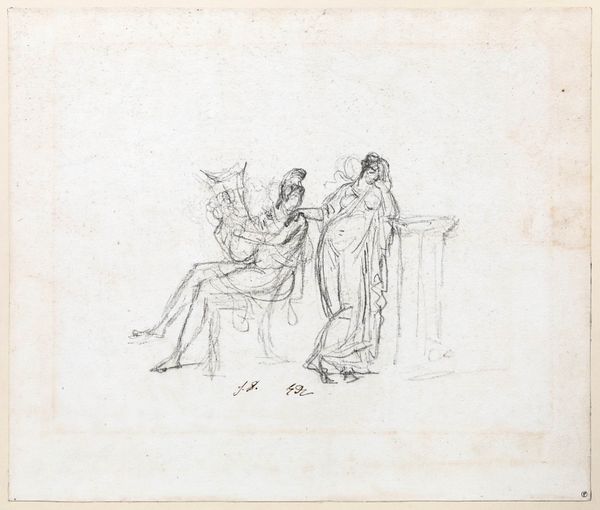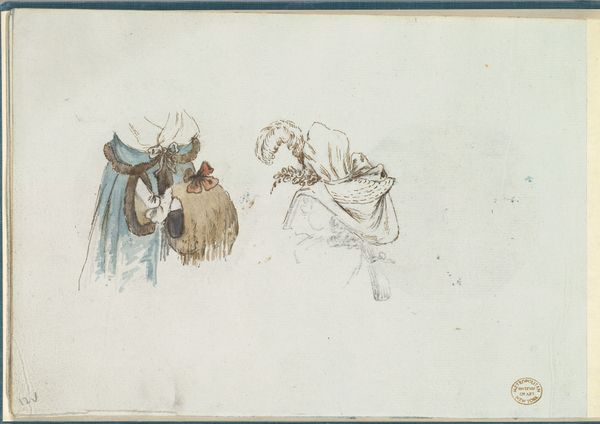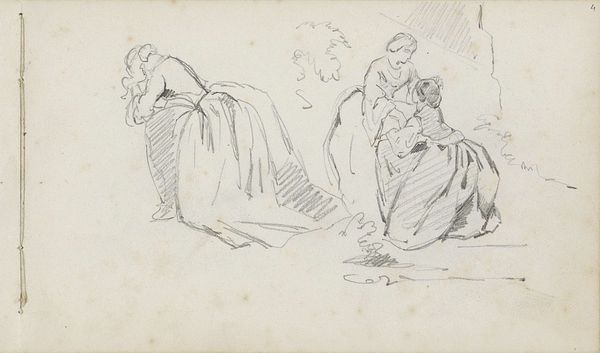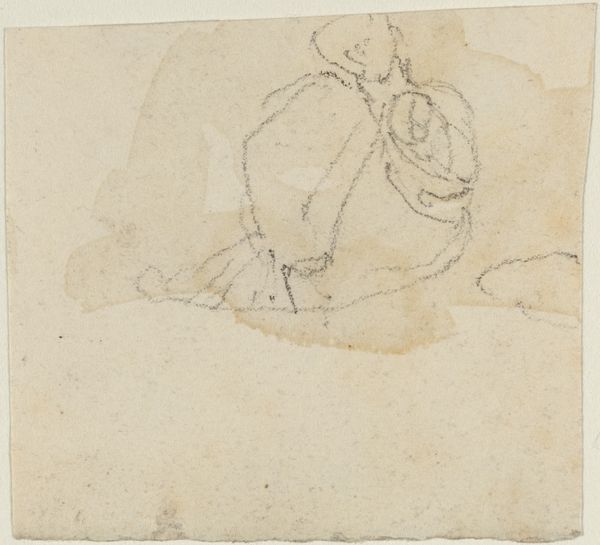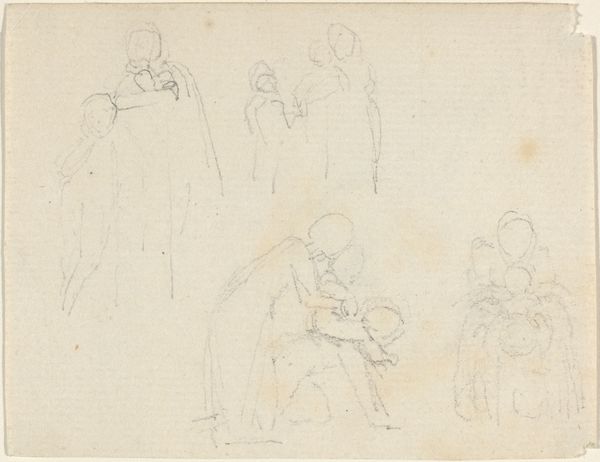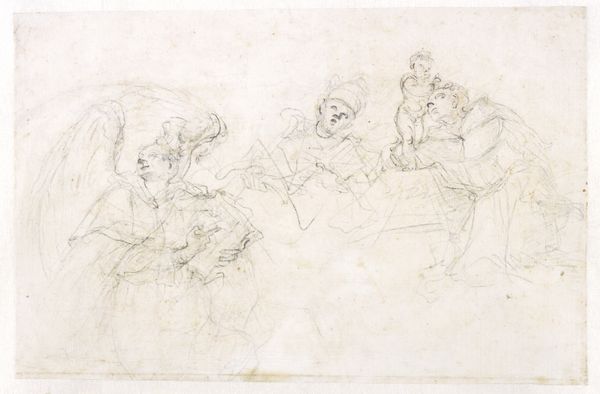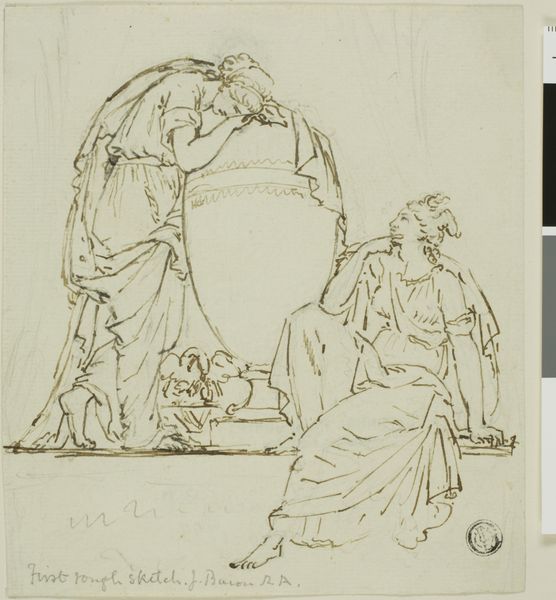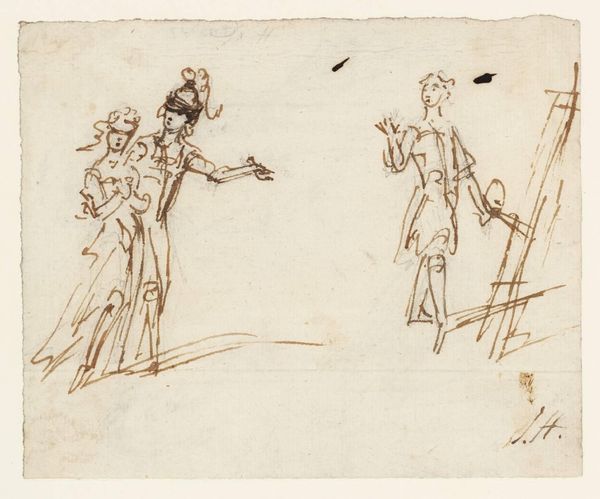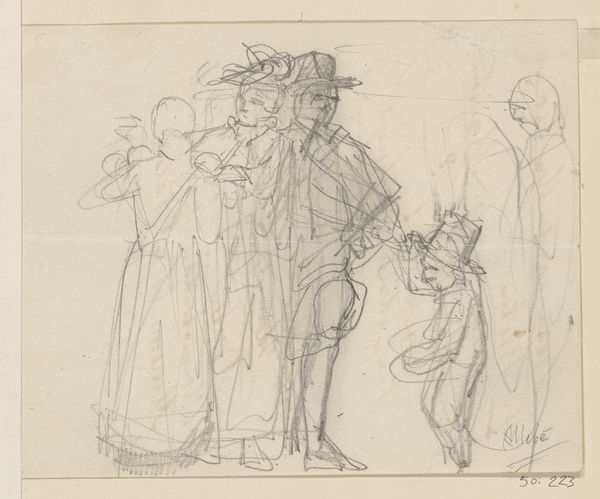
Study for "The Return of King Friedrich II from Küstrin" c. 1850s
0:00
0:00
Dimensions: sheet: 13.65 × 20.64 cm (5 3/8 × 8 1/8 in.)
Copyright: National Gallery of Art: CC0 1.0
Curator: Here we have Emanuel Leutze’s study for "The Return of King Friedrich II from Küstrin," a pen and ink drawing dating from around the 1850s. Editor: It’s more gestural than I anticipated. All wispy lines and fleeting suggestions. It's interesting—almost more about the feeling of the moment, of reconciliation, than the specific details of the figures. Curator: Absolutely. Leutze, a key figure in Romanticism, was deeply concerned with conveying emotion and historical narrative. Here, we see a glimpse into his process. It appears that he worked to portray the fraught moment of King Frederick’s return to grace. Notice the figures huddling together: they emphasize intimacy within a larger historical drama. Editor: There’s something vulnerable in these characters' postures, wouldn't you agree? It’s a powerful contrast with the rigidity we often associate with historical depictions of royalty. Did you happen to note if the expressions are different or just absent? It is too unclear for me, even though that very much effects what I am perceiving. Curator: Their expressions remain elusive within the sketch’s sparseness, which invites speculation. We should remember Friedrich's story: his imprisonment by his own father, the King, his attempted escape, and, eventually, the reconciliation. This image freezes that climactic emotional return. Editor: Reconciliation is an emotionally complicated business. Look at how close their bodies are; I bet it has something to do with trying to rebuild broken trust. Almost like seeking warmth—a human heat source is very much an Icon for peace between individuals. I get how Romanticism fed into it; feeling becomes central to these works. But is it about real intimacy or a show of it for posterity? Curator: Both can exist together, perhaps feeding off of each other. That inherent tension resonates within the broader narrative: Friedrich's return symbolizes not only personal forgiveness, but the restoration of his place within Prussian history. The symbols merge: family, legacy, power, reconciliation. Editor: Yes, the drama unfolds in those few pen strokes, a private yet very public stage. Well, Leutze succeeded in transmitting that emotional complexity. It stays with you long after you leave this room, doesn't it? Curator: Indeed. These preliminary works give us a peek behind the curtain. An artist mapping not just the external form, but the very essence of human reconnection.
Comments
No comments
Be the first to comment and join the conversation on the ultimate creative platform.
